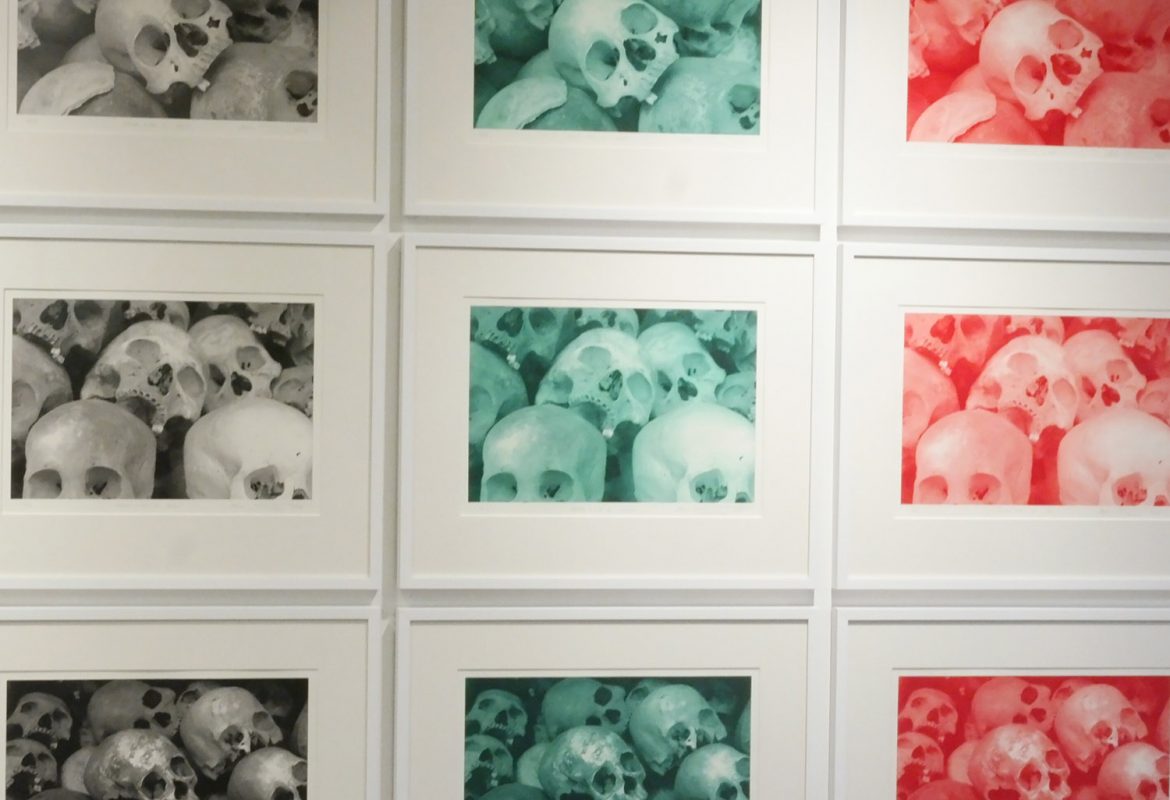Death – a conversation with Morten Viskum 2002
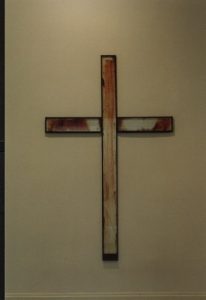
During my work with Rotten på korset (The Rat on the Cross) I did an interview with Morten Viskum where we also discussed the theme of death. Whether it was Viskum or myself that eventually were interviewing became unclear because after a while it bar characterized more by a conversation. Later I decided that this conversation needed another context than what was natural in the thesis, and that it also should have a separate space on mye site, independent of Rotten på korset (The Rat on the Cross) but for a further reading of the topic, I refer anyway to Rotten på korset chapter 6:4, where I look at the opportunities that theming the death in contemporary art evokes such strong reactions it sometimes does. (Rotten på korset will be translated into English during autumn and winter)
”Simultaneously with the man began to think, the death became real in all it's horror". (freely translated from Danish) 1)Schopenhauer 2000:9Was Schopenhauer right about this, that death is for us humans something horrifying? In many ways it might seem so, given that it seems to be the last taboo given in our time. I mean death as a theme for a deeper dialog. You experience death via media almost every day, but it is in many ways a distant death, isn't it? When the gruesome pictures flicker across the television screen, they are distancing themselves automatically; if not it would have been untenable. Should we instead go closely on death, everything becomes much more difficult, for what really happens when we die? Are we, in a Platonic way, free from the incarnate him? Are spirit and matter again divided into two devices? What then is the spirit? Does it exist? In that case; is it a substance, or what? When a man dies, is he leaving some of his spirit behind, and can we perceive it? If that is the case, in what way?
You can keep on endlessly questioning, but you will not get any unified respons. One has heard and red countless "near-death-experiences" and common to most is the light in the tunnel, and an experience of total peace and harmony. Someone can even tell about their reunion with their loved ones that have passed away earlier. In november/desember 2000 it took place a discussion on the topic on www.doktoronline.no, where psychiatrist Nils Håvard Dahl stated:
A few years ago there was great interest in the so-called "near-death-experiences". Now we know that this is dew to lack of oxygen in the brain and has, unfortunately, a prosaic cause of great annoyance on priests and others with a sense of mystery.(freely translated from Norwegian) 2)available 17.08.05 on www.doktoronline.no
In the debate one of the debaters enter a possible explanation in terms of the experience of light in the tunnel: When one dies one looses sight first, and if peripheral vision is the first to disappear, you will, by just having sight in the center obtain a tunnel effect. 3)ibid One can also look elsewhere to find similar explanations of near-death-experiences, but we will not go any further into it here, just establish that what happens when one dies, beyond the purely physical , only those who have gone completely over to the other side know. We, who are still here, will try to find an explanation, but we will probably not find a holistic certainly picture, whether one leans to the spiritual or the physical. What we believe in is also partly religious- and culture conditional.
Autumn 2002: We; Morten Viskum and myself are in Nedre Eiker, going into a chapel the artist has bought with money he inherited after his beloved grandfather. The place has not been in use for many years, and entering the building we get to know a smell telling us just that; it hasn't been in use for a while. We enter a big room. Along one long side there are windows with heavy curtains. On the opposite side we find a podium which is approximately a meter high. Up on this podium we find the pulpit. Behind the pulpit one find the entrance to a small cubicle that was used when baptizing adults. Yet there are two rooms in the building; a kitchen just inside the opposite short wall where we entered the building, and from there you can enter the next room, located to the right of the kitchen. This room is currently used as storage. Here the artist has piled up things he has taken care of after his grandfather, as well as other objects. I also get to greet the protagonist from the artist's performance James Last Trip. this colourful pig head is now kept in a pails with formalin. 4)see Rotten på korset part 1, where this artwork is described ; English version coming soon
After Morten Viskum has been telling me some of his plans for the place, we find ourselves in front of the podium, a little to the side of the pulpit. Next to us is a wooden cross, used on the grave of a young boy who died of an overdose. We can still see the marks from how deep underground it has been. When the cross was replaced with a permanent memorial, the boy's mother gave it to Viskum to use in his art. The death is in many ways present in this room. No wonder, considering what an artist I'm interviewing.
I start by saying that I've heard that he previously was afraid of death, and therefore I'm asking how he images the death; as matter and spirit, becoming another stadia, or what? Viskum replies that he think of man as matter and spirit, and that this split up when one dies. He finds it unlikely that you are only meant to be gone when you die, but adds that there is no guarantee, you just have to choose the one or the other. Himself he chooses to believe in a life after death, despite the fact that one can doubt sometimes.
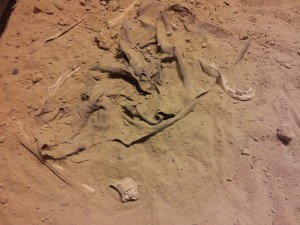
In Africa one find a perception that the soul is immortal. Some culture believe that one can see the soul if you look in a mirror or in the water. Therefore, older people do not like to be photographed; "It means theft of the soul, and the spirit hunter will make you ill" (free translated from Danish) Similarly comes the soul's existence to work in the dream, when it leaves the body and go out on their voyages of discovery, while the body remains in the bed. 5)Sørensen 1977:43 About death and soul it is stated that the death and the soul were enemies, and a legend tells of how death was trying to kill the soul, but failed, and thus became the soul immortal. 6)Sørensen 1977:45
Morten Viskum further tells about a girl in upper secondary school who made a strong impression on him. She was a non-believer and didn't believe in an afterlife, and she could not understand that so many well-educated and intelligent people could belive in such a thing. Viskum than states that despite he knows much about biology and knows how death occurs physically, he is clinging himself to the mental, and the band to a wider life.
The Zulus have a different perception of man as threefold, they talk about body, shadow, and virility. The Zulus also see the life as a part of a wider unit; when an old person looks at his child and grandchildren, they see not only the next generation, but also their own future. Each individual is just one part of a larger link extending from ancient times. 7)Sørensen 1977:56 About the shadow the Zulus say that when body and shade are combined, it becomes life. That's why they are careful not to step on each other's shadow and the reason why they are going behind each other and not side by side. Unifying body and shadow is something that man has in common with animals, but in addition man has human vitality, and this distinguishes them from animals. When a man dies, divides the life force from the body and shadow, and gradually decreases also shade, it dissolves in the night, or follow the body down to the grave, where other shadows are. 8)Sørensen 1977:58I then start to refer from Philippe Ariés' book The Death in the West including dealing with the transition from Pagan times to Christian times. In Pagan times they didn't talk about man died, one only walked into another state. The living and the dead lived in a manner side by side, the latter like spirits. With the introduction of Christianity, it becomes more complicated; one threatens with heaven and hell, and as a result the Death became a non-issue. I catch myself in that I almost have switched side to me being interview, something I also noted, but Viskum has nothing against it.
I therefore continue try to explain my thoughts about dying, that both matter and spirit are a whole a while after death has occurred, but that the spirit undresses the body in a way, leaving the body, and I feel very strongly that the spirit then lives on.
MV: That it's only there for a short period?
WH: Yes, after you're dead. In Hinduism, the soul is also immortal, soul and body are divided. The body is changing and is seen as a kind of clothes that the soul gets dressed in. In a typical life cycle one is born and the soul enters into the body, and at the end of life when the body has become old, the soul enters out of the body to find itself a new one. This process continues until the soul has been through all its good and evils deeds, and overcome the ignorance. The soul is seen as a small part of the absolute recognition, which is God. 9)Sørensen 1977:70I go on to that one buries people, saying that I had not manage to burry one of my loved ones if I didn't belive that the spirit had left the body, and lives on somewhere else. I then look at the body as a residue of the time one is in this sphere; our time on earth.
MV: But does that mean that you will not cremate someone?
WH: You may well do, for me it is totally indifferent.
Regarding Buddhism, birth and death is a part of the same process, seen from two sides:”Somehow you can call the same door as well as input as output, depending whether you see it from the outside or from within. In other word we have countless times gone through the ports of death and birth and our present life is only "beyond" or the continuation of our previously existences and all existences which is preceded. (free translation from Danish) 10)Sørensen 1977:83
Also Buddhists yearn for immortality but the one described above is only input and output of the individual life. Immortality is for the Buddhist to overcome this. To achieve that the individual person have to displace the ephemeral, which must be replaced by faith and wisdom. 11)Sørensen 1977:86 In that way the individual can reach nirvana.
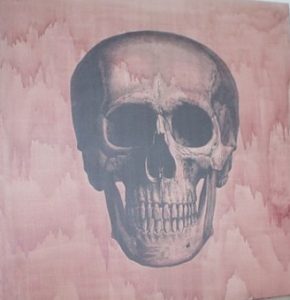 Viskum wonder if I think that the spirit is more present right after you're dead, and I answer affirmatively, but that it fades away farther and farther away eventually.
Viskum wonder if I think that the spirit is more present right after you're dead, and I answer affirmatively, but that it fades away farther and farther away eventually.
I answer by telling that I myself have experienced the spirit of someone that has passed away. For a long time afterwards the person could be perceived as close, but as time went by the spirit of the person became more distant. But defining what happens is difficult.
MV: Sure it's hard! As a famous artist, is he more present than a plumber in a hundred years? The artist is thinking about the possibility of an exhibition of his art in a hundred years.Islam has not an exact definition of the soul as being. The Arabic word used is nafs, which involves more than soul. It "referes not only to the essens of life which lies deep in every living being, but also the living being personal identity."12)Sørensen 1977:151. Regarding immortality Quran says that only God alone is immortal, but it doesn't mean that man is completely terminated by his death; ”Nevertheless speeches Quran resistant about a continuation of life after death - that is a sensing deed, that the body's so called "death" is not the end of human existence, but far rather the beginning of a new life period of indefinate duration." (free translation from Danish) Quran calls this resurrection, but what is occurring is impossible to describe in human terms. 13)Sørensen 1977:152. One must not compare this resurrection with Christianity and the resurrection of Jesus. In Islam there is only one God, Islam is a fully monotheistic religion. It is only Christianity that have the Trinity, and sees Jesus as son of God. In Islam, Jesus is regarded as a prophet, like other prophets.
Moreover, Viskum wander, if it is so that I believe that the spirit of a human being disappears further and further away from those who are left, if he as an artist disappears more slowly than others. WH: It is difficult, I cannot say wether yes or no, but thinking about what you have created, you are in a way present. Whether it is a peace of art, a building or..... MV: But if it is a work of art that no one know who has created, do you feel that someone is present? WH: Yes absolutely. MV: Do you feel that if you are looking at an old stonewall, for example, it should be no more?WH: Yes, my grandfather made some wonderful stone walls, and when I see them, yes, he is in a way present. He was artistic, and he was a farmer, and I feel, seeing much of what he created, cheers and so on, then I feel that he is present in a way. When I see the stone walls I start thinking of him when he led them, but it is difficult.
Thus ends so far our conversation about death, then we go on talking about an English curator in Nifka who wondered if Viskum played God.
Death means a lot for most people, but for an artist like Morten Viskum, who works as much with the topic, it must mean very much. As a conclusion to the conversation between the artist and myself, we could say that it was obvious that it was a topic that was very difficult for both. Uncertainty about what death really means was great. I would think that this conversation in many ways can mirror what many feel about this difficult topic.
Viskum has commented the difference between himself and me, in that he expresses himself through his art, while I express myself using words. In this case it in many ways becomes distinct, so in addition to the artist's vocabulary expressions, one can take a look at some of his artistic expressions found in this post, in addition to those which is represented and discussed in Rotten på korset (The Rat on the Cross); altogether it will say a lot about his perception of death. Since it is me that put most words on thoughts and feelings about the topic, it will be an unified expression for my part. Both agreed, however, that here in the West the theme of death is still a taboo, or a none-issue. As a contrast to our western perception it may be a tip to look at the book the Tibetan Book about Living and Dying, which is a textbook about preparing to die.
I will conclude with some words of Schoppenhauer. They may in many ways be food for thought: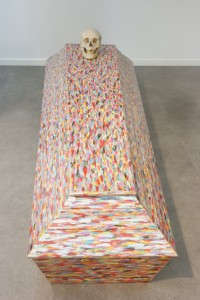
If the idea of not existing really seems so deterrent, the thought of the time when we were not yet up must grasp us by the same horror. A non-existence after death can certainly not be different from the time before our birth, why should we consider the one time more than the other? (Freely translated from Danish) 14)Schopenhauer 2000:13List of litterature: Ariés, Philippe: (1977) Døden i Vesten Det norske samlaget Schopenhauer Arthur: (1957) Om døden og vort sande væsens uforgjængelighed København, Hasselbalchs forlag Stefánsson/Sørensen: (1977) Liv og død – en tekstmosaik fra religioners og ideers verden Gyldendal, København All illustration in this post is Viskum's work of art. The photo with the cross is taken by Odd Odd Nerbø For norsk trykk her
Referanser [ + ]
